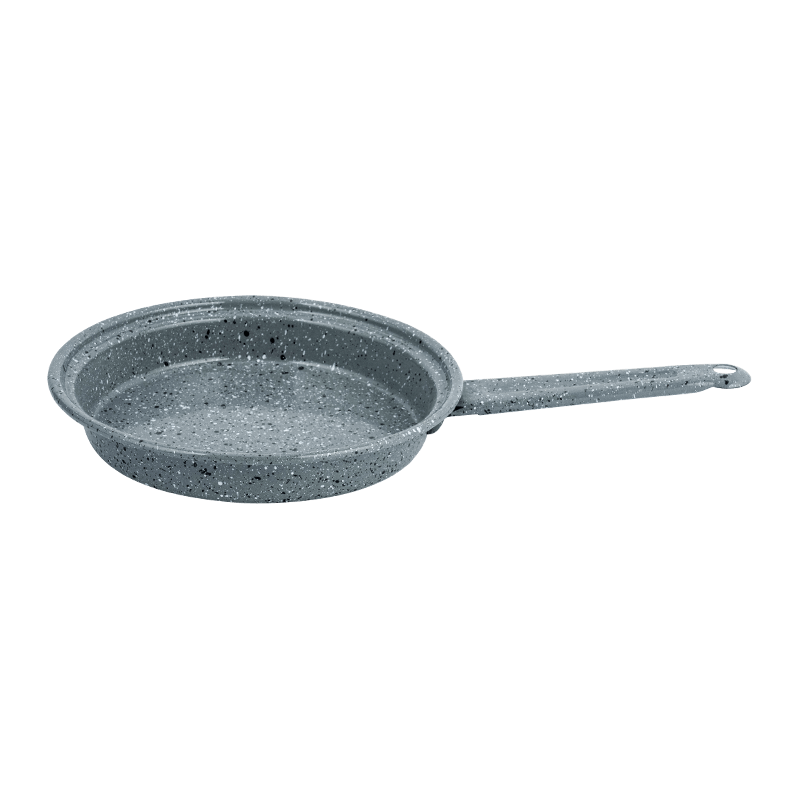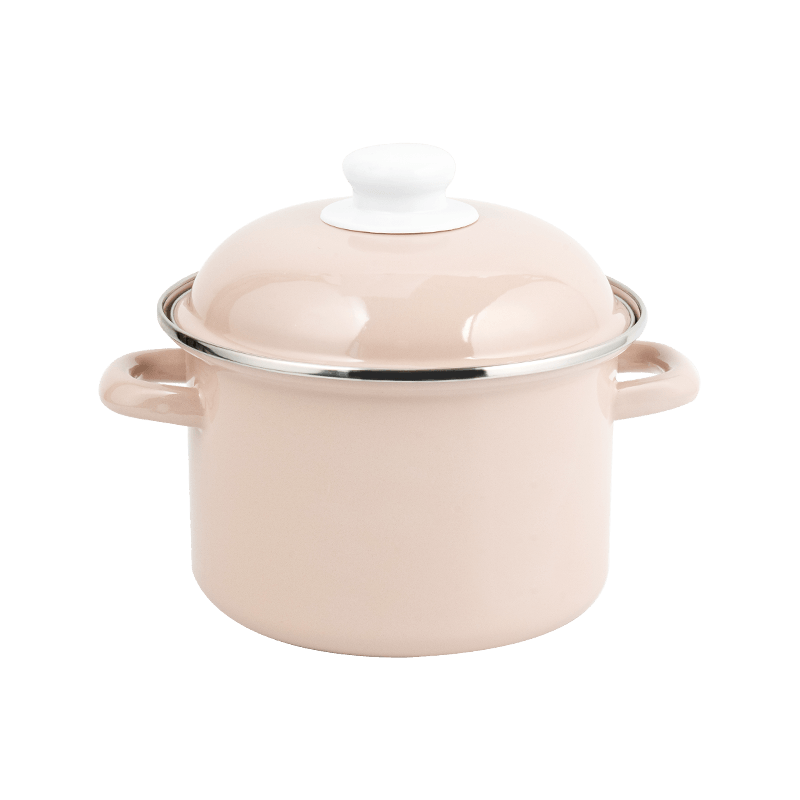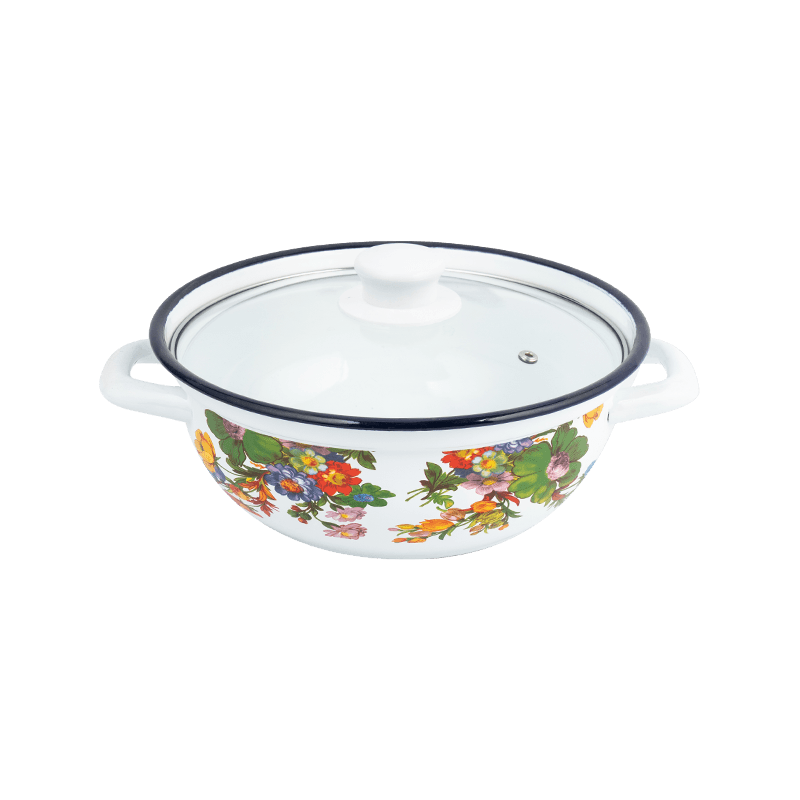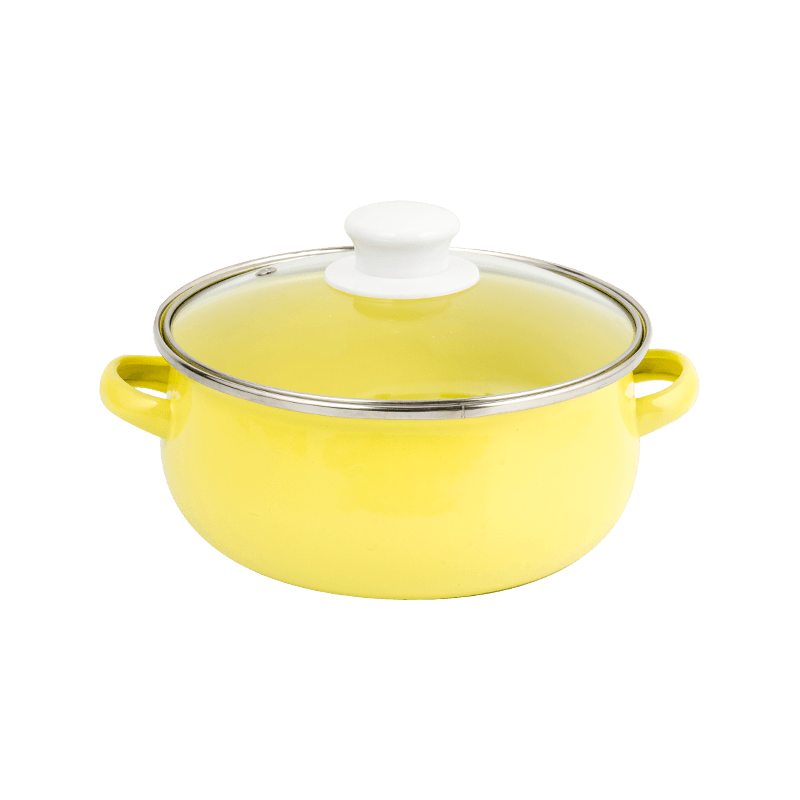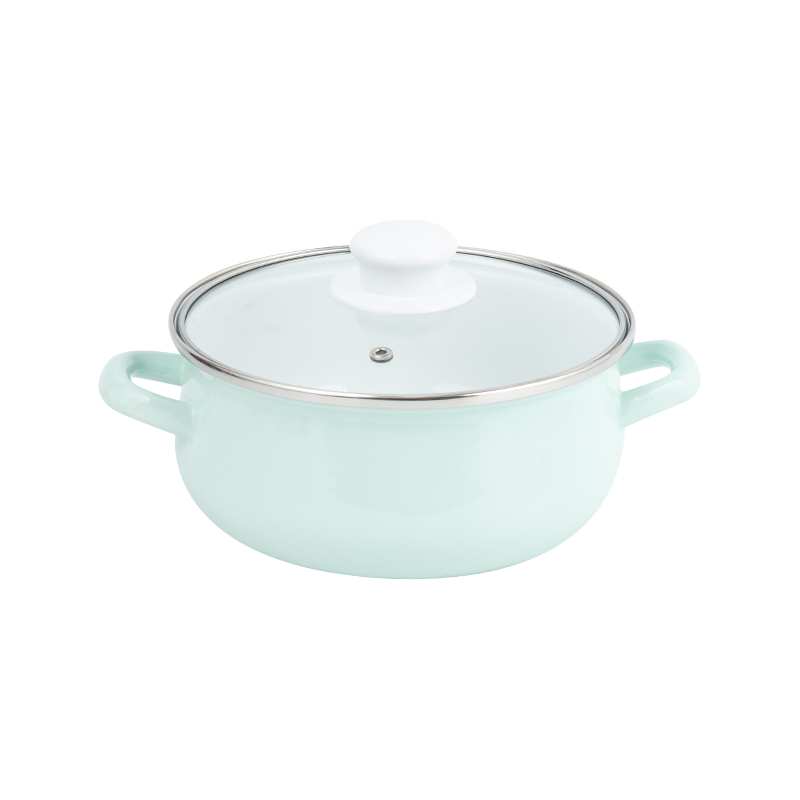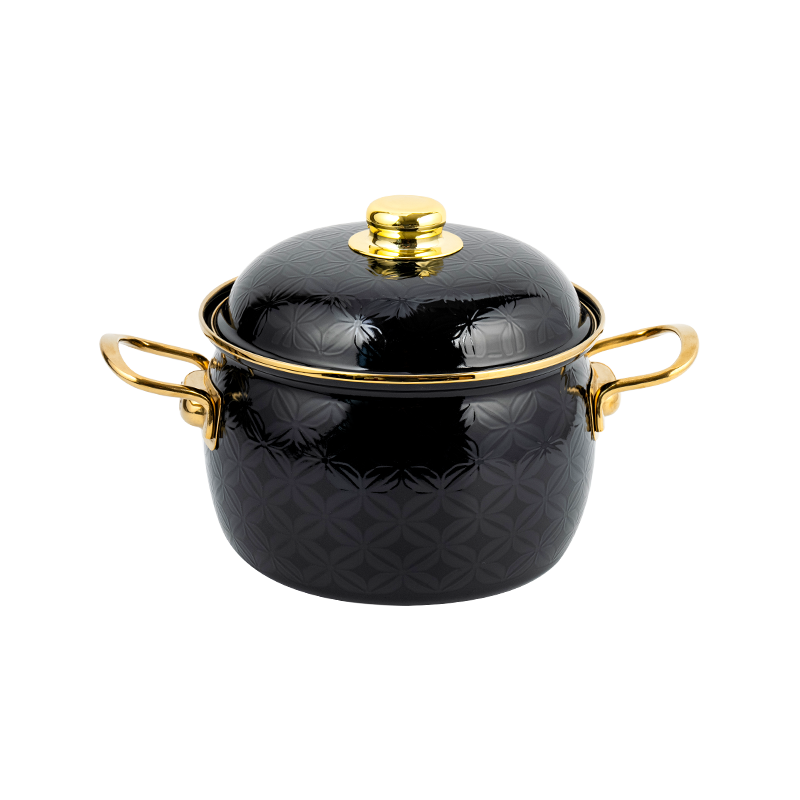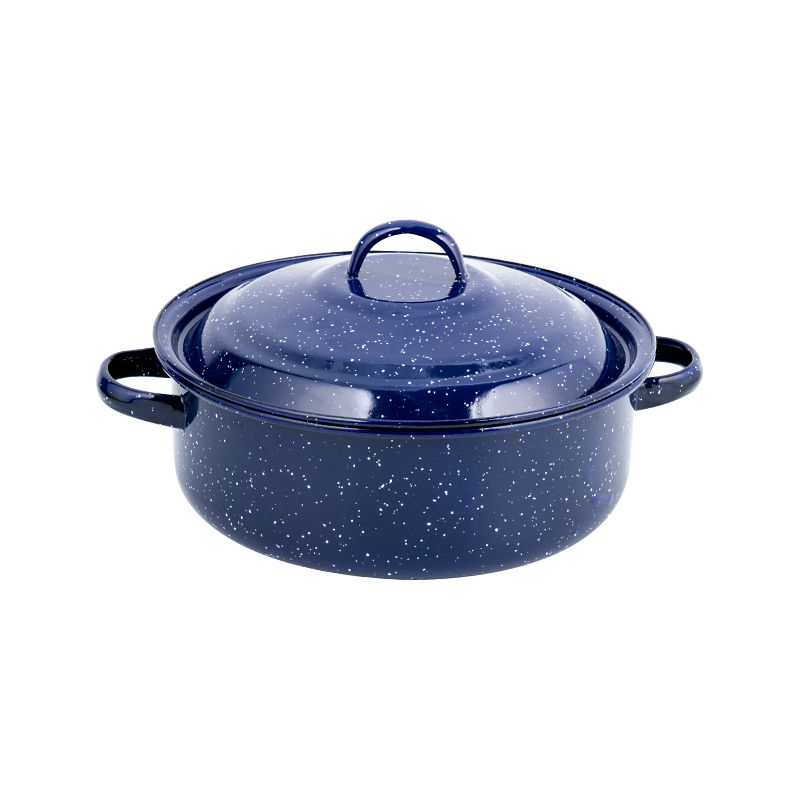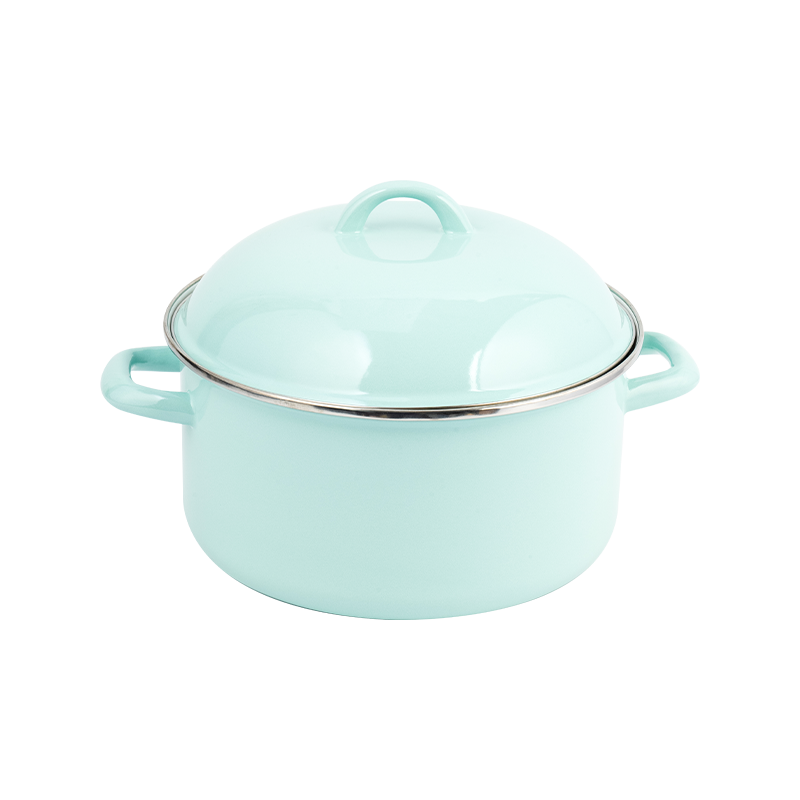In recent years, the Double Handle Enamel Pot has become a popular choice for professional kitchens and home cooking due to its unique aesthetic design and balanced thermal conductivity. However, many users have reported that food frequently sticks to the pot. The latest report from the Cookware Research Institute points out that mastering the correct usage techniques can reduce the sticking rate by 76%.
▍Understanding the special features of enamel pots
The key difference between double-handled enamel pots and traditional cast iron pots lies in the glassy glaze layer covering the metal base. Research by the Materials Science Laboratory of New York University shows that the surface porosity of high-quality enamel layers is only 0.3-0.7μm, which is both its corrosion resistance advantage and the root cause of easy sticking during initial use. A new pot needs to undergo 3-5 times of oil infiltration to form a natural anti-stick film in the microscopic pores through carbonization reaction.
▍Five-step scientific anti-sticking method
Precise temperature control preheating
Preheat the empty pot on medium heat for 90 seconds (gas stove) or 120 seconds (induction cooker), and use an infrared thermometer to monitor the optimal range of 150-180℃. The French Culinary Institute has confirmed that this temperature range can quickly form a continuous molecular film of grease.
Oil selection and processing
• High smoke point oil is preferred: refined coconut oil (232℃), rice bran oil (254℃)
• Cold pan cold oil application: use a silicone brush to evenly apply a 0.5mm oil layer before preheating
• Secondary oil filling technique: 20 seconds after the food is put into the pan, pour 5ml of oil along the edge of the pan
Ingredients pretreatment specifications
• Protein: use kitchen paper to absorb the surface until the water content is less than 8%
• Root vegetables: precook until the starch conversion rate is greater than 65%
• Frying: create a 0.3-0.5mm charred layer before turning over
Acid-base balance rule
German TÜV testing shows that when the pH value in the pot is maintained at 5.5-7, the glaze activity is the lowest. Suggestions:
• Acidic ingredients: make oil film isolation first (such as frying onion base before cooking tomatoes)
• Alkaline seasoning: add before removing from the pan to avoid long-term stewing
Cleaning and maintenance standards
• Cool to below 60℃ for cleaning
• Use neutral detergent with PH7.0±0.5
• Use food-grade mineral oil to maintain the glaze every month
▍Advanced suggestions from professional chefs
The anti-stick performance of double-handled enamel pots is directly related to thermal inertia. It is recommended to choose glaze products containing boron trioxide (B₂O₃). Experimental data shows that the coefficient of thermal expansion (CTE) of boron-containing glazes is more compatible with steel billets and can reduce the occurrence of microcracks. Avoid using metal utensils. A single scratch will increase the local adhesion coefficient by 300%. It is recommended to use hardwood or silicone kitchen utensils and stir-fry in a circular motion instead of in a straight line.

 English
English 中文简体
中文简体




